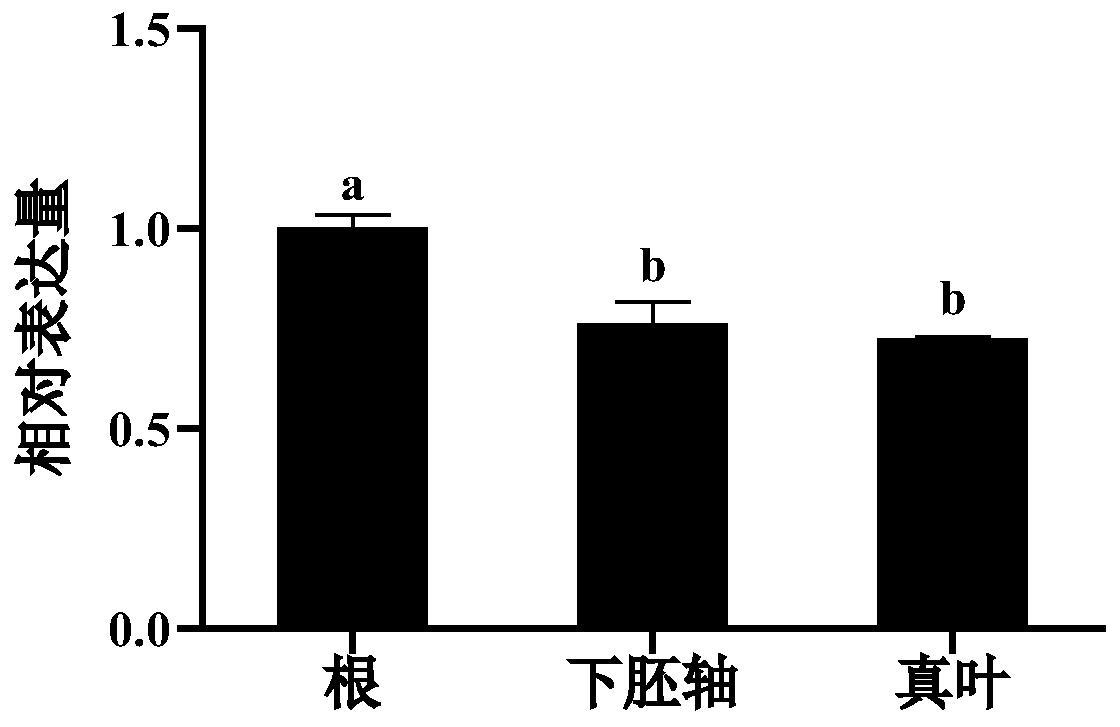Application for cotton GhBsr-k1 gene
A cotton and gene technology, applied in the field of genetic engineering, can solve the problems of difficulty, long cycle, and the disease resistance mechanism of cotton Verticillium wilt has not been fully revealed, and achieve the effect of enhancing resistance and reducing direct economic losses.
- Summary
- Abstract
- Description
- Claims
- Application Information
AI Technical Summary
Problems solved by technology
Method used
Image
Examples
Embodiment Construction
[0029] In order to make the object, technical solution and advantages of the present invention clearer, the present invention will be further described in detail below in conjunction with the accompanying drawings and embodiments. It should be understood that the specific embodiments described here are only used to explain the present invention, not to limit the present invention.
[0030] 1. Materials and methods
[0031] 1. Plant material and treatment
[0032] The plant material to be tested is upland cotton "Junmian No. 1". The seeds with full grains are selected, soaked in 30% hydrogen peroxide solution for 2 hours, rinsed with sterile water for 3 times, soaked in a 37°C incubator for 24 hours, and taken Lubai Put the seeds on the germination paper to germinate. After 1 day, take the seeds with the same bud length and sow them in the nutrient soil containing vermiculite (nutrient soil: vermiculite = 2:1). The cultivation conditions are: 28 ° C ± 2, 16 hours of light ; 2...
PUM
 Login to View More
Login to View More Abstract
Description
Claims
Application Information
 Login to View More
Login to View More - R&D
- Intellectual Property
- Life Sciences
- Materials
- Tech Scout
- Unparalleled Data Quality
- Higher Quality Content
- 60% Fewer Hallucinations
Browse by: Latest US Patents, China's latest patents, Technical Efficacy Thesaurus, Application Domain, Technology Topic, Popular Technical Reports.
© 2025 PatSnap. All rights reserved.Legal|Privacy policy|Modern Slavery Act Transparency Statement|Sitemap|About US| Contact US: help@patsnap.com



